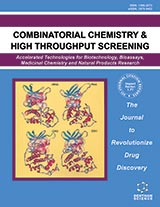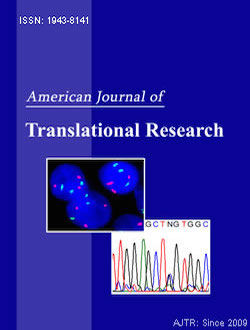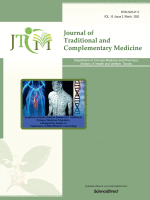You Gui Wan
How to submit an article:
- Registered users can submit any published journal article that has a unique DOI (Digital Object Identifier) name or link to Research Hub.
- For example, you can paste the full DOI link:
https://doi.org/10.1109/5.771073or just the DOI name:10.1109/5.771073into the field above and click submit. - The person who is first to submit a valid article to Research Hub will forever be credited for it, and every article submission earns you +6 Research Points.
Published research studies are articles that present the findings of original research that has undergone a peer-review process and has been made publicly available in scholarly journals, books or other media.

A Network Pharmacology Study on the Similarities and Differences in the Mechanisms of Zuo Gui Wan/You Gui Wan for the Treatment of Premature Ovarian Failure
2022 Oct 18 Combinatorial Chemistry & High Throughput Screening Shanshan Mei, Chaoqin Yu, Jie Ding, Wen Cheng
Network Pharmacology Premature ovarian failure (POF) You Gui Wan Ovarian InsufficiencyThe Chinese medicine formulas Zuo Gui Wan and You Gui Wan have the potential to treat premature ovarian failure through different pharmacological pathways.

HPLC-MS/MS based comparative pharmacokinetics of 12 bioactive components in normal and osteoporosis rats after oral administration of You-Gui-Wan
2021 Dec 21 Journal of Separation Science Hua Yin, Yahong Wang, Ling Wang, Xue Bai, Jianhua Zhang
Thus, the optimized analytical method, along with the pharmacokinetic evaluation in the osteoporotic model may offer a more comprehensive understanding to elucidate the anti-osteoporosis mechanism of You-Gui-Wan. These findings may aid in developing a more effective treatment plan for osteoporosis.
Animal Study You Gui Wan
An experimental research into the potential therapeutic effects of Anti-Osteoporosis Decoction and Yougui Pill on ovariectomy-induced osteoporosis
2019 Sep 15 American Journal of Translational Research Gu F, Jiang J, Wang S, Feng T, Zhou Y, Ma Y, et al.
In conclusion, Anti-Osteoporosis Decoction (AOD) and Yougui Pill (YGP) exert regulatory effects on osteoporosis in ovariectomized rats. They may be potential candidates for the therapy and cure of human osteoporosis.
Animal Study You Gui Wan Osteoporosis
Effect of Zuogui pill and Yougui pill on osteoporosis: a randomized controlled trial
2018 Feb Journal of Traditional and Complementary Medicine Wenxiong L, Kuaiqiang Z, Zhu L, Li L, Yan C, Jichao Y, et al.
Zuogui pill or Yougui pill could improve bone mineral density (BMD), ease pain, relieve Kidney deficiency syndrome, improve the quality of life osteoporosis patients, inhibit bone conversion and regulate the coupling balance of bone formation and bone resorption.
Randomised Controlled Trial You Gui WanResearch insights are moderated by the Research Hub team and offer an at-a-glance overview of interesting research findings.

2022 Combinatorial Chemistry & High Throughput Screening
The Chinese medicine formulas Zuo Gui Wan and You Gui Wan have the potential to treat premature ovarian failure through different pharmacological pathways.
Network Pharmacology Ovarian Insufficiency Premature ovarian failure (POF)
A Network Pharmacology Study on the Similarities and Differences in the Mechanisms of Zuo Gui Wan/You Gui Wan for the Treatment of Premature Ovarian Failure
Shanshan Mei, Chaoqin Yu, Jie Ding, Wen Cheng
Review Articles
Review articles summarise and critically evaluate the current state of research on a specific topic or field by synthesising multiple primary research studies.
Clinical Trials
Clinical trials are research studies that involve people and are conducted to evaluate the safety and efficacy of new treatments or interventions, such as drugs, medical devices, or behavioural therapies.
Study Protocols
Published study protocols are detailed plans that outline the objectives, methodology, statistical analyses, and organisation of a research study that have been made publicly available for others to review and use as a reference.
Presentation Slides

Network Pharmacology
The Chinese medicine formulas Zuo Gui Wan and You Gui Wan have the potential to treat premature ovarian failure through different pharmacological pathways.
Shanshan Mei, Chaoqin Yu, Jie Ding, Wen Cheng
Executive Summary
Write an executive summary in the form of a blog article on the topic of "Research into Chinese medicine treatment for You Gui Wan" summarising the research below and using language that can be easily understood by patients and avoiding medical jargon using a professional and caring tone of voice.
Write an executive summary in the form of a blog article on the topic of "Researched Chinese medicine treatments for You Gui Wan" summarising the research below in an objective and easy to understand way, and using language that can be easily understood by patients. Group the article into Chinese medicine treatments first, followed by nutrition and other treatments. Avoid using medical jargon and use a professional and caring tone of voice.
Write me a concise but easy to understand executive summary on the topic of "Chinese medicine treatments for You Gui Wan" based on the following research that I will give you. Your summary should be 2 paragraphs long in Australian English spelling and include references to the studies.
A Network Pharmacology published in 2022 in the journal Combinatorial Chemistry & High Throughput Screening found that The Chinese medicine formulas Zuo Gui Wan and You Gui Wan have the potential to treat premature ovarian failure through different pharmacological pathways. This study used a public database to identify the active ingredients and potential targets of the Zuo Gui Wan and You Gui Wan compounds. These were analyzed in relation to premature ovarian failure (POF) related genes obtained from OMIM and GeneCards. A protein-protein interaction network was established using STRING, and a drug-active ingredient-target gene network was constructed. The study thus identified similarities and differences in potential targets, active ingredients, and enriched pathways between the two compounds. Analyzing the drug-target-pathway network revealed that both compounds contain multiple common active ingredients, as well as unique components, and share several targets in the treatment of POF, showing similar core mechanisms of action. However, each compound also targets some unique pathways, which indicates their differential approaches to POF treatment.
Moderation Tools
Topic
Sign In
Users not signed in are limited to viewing the 5 most recent items of content.